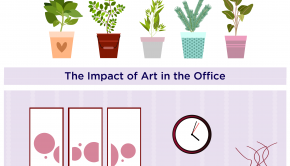When Will Paperless Offices Become the New Standard?
The concept of a “paperless office” isn’t a new one, but at least for now, it’s still more common to have offices that rely on at least some forms of paper-based communication than it is to have offices that operate completely paperless. One of the top trends for workplaces in 2019 is going to be the adoption of more paperless workflows, relying on digital platforms and automation to keep things running more efficiently (and without paper), but even so, it’s unlikely that the majority of the world’s companies are going to become paperless by 2020.
So when is “paperless” going to become the new standard? And is it even realistic to expect it to be?
Why Paperless Offices Are So Important
Paperless offices are strictly better than other offices in the following ways:
- Environmental friendliness. One of the biggest reasons the paperless concept caught on is due to its environmental undertones. Using less paper in an office means less of a burden in creating and shipping that paper, meaning paperless offices are more sustainable and better for the environment.
- Cost savings. Businesses can expect to shell out something like $50 per month, per employee in office supplies alone—and many of those supplies are paper products or accessories to organize paper products. Switching to digital services or relying on more reusable resources can save thousands of dollars a year, even for small businesses.
- Convenience (for the most part). In many cases, paper-based transactions are less convenient than their paperless counterparts. For example, it takes longer to send an invoice via traditional mail than it does to send it as an email attachment.
The Challenges
If there are so many benefits to going paperless, why aren’t we already on this standard?
Unfortunately, there are many key challenges standing in the way of companies going paperless:
- “True” paperlessness. It’s not a significant challenge for a company to move from printing and mailing paper checks to adopting a direct deposit system. It’s not usually a challenge to move your paper invoicing system to an entirely digital one. But a truly paperless office is much more of a challenge than most people realize. When someone spills their lunch in the kitchen, you usually rely on paper towels to clean it up. Half your office probably comes in with a paper cup, which they got from a café on the way in. You might take notes on paper during meetings because it helps you remember things better, and you almost certainly rely on paper products when using the bathroom. These less-conspicuous uses of paper are much harder to replace, and practically force us to either abandon the pursuit of a paperless office or change the definition of paperless.
- Old-fashioned and bureaucratic organizations. It’s easy for a brand-new tech startup to go paperless, since they don’t have any existing standards to follow, and they likely only have a handful of people whose actions need to be regulated. But for a larger organization, or one that has a long history, making the change to a paperless system requires a substantive overhaul of existing infrastructure—and ruffling the feathers of thousands of people who insist that their way of doing things is the only way of doing things. This is also problematic because these organizations may do business with otherwise paperless offices, demanding they adhere to old paper standards when communicating, sending invoices, and so on.
- The transition. Finally, there’s the process of transitioning to become a paperless office, which is a hassle for existing companies. You may have to digitize all your existing paperwork, which may not be organized or convenient to access. You’ll almost certainly have to train your staff on an entirely new set of tools, workflows, and routines. You might also have to find new digital providers who offer services that can replace your basic paper needs. The best counter to these issues is a slow rollout, with gradual, iterative changes to your processes, but that delays the timeline for overall adoption of paperless standards.
Projecting a Realistic Timeline
So how long will it be before most offices in the world are paperless? That’s hard to say, and it’s reasonable to suspect that we may never have “truly” paperless offices, due to peripheral products like paper cups and paper towels.
However, we’re already on a strong trajectory toward relying on digital platforms for recordkeeping, workflow management, and basic tasks. Over the course of the next decade, even slow-moving organizations should find themselves gravitating away from using paper products as the norm. In that context, we may not see paperless offices as the norm by 2030, but we’ll certainly see paper-reduced offices as the norm by that time.

















